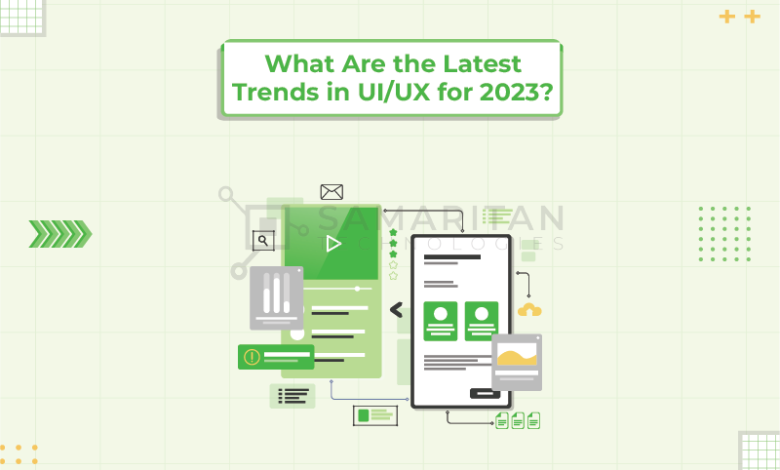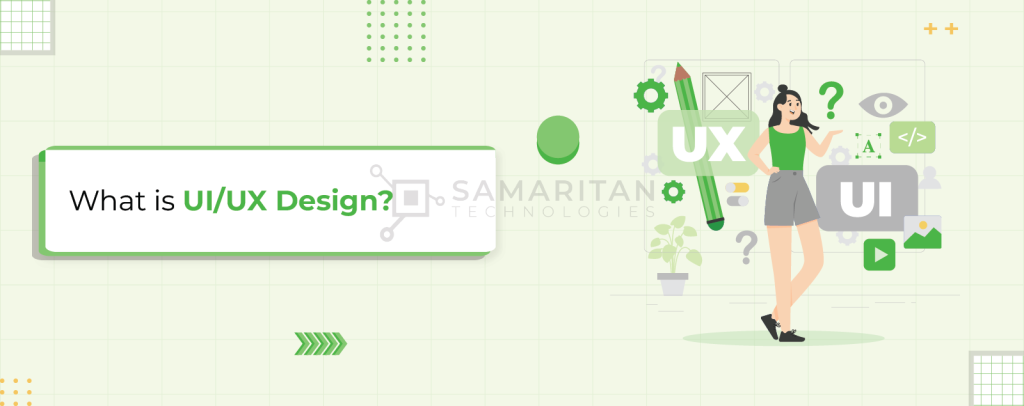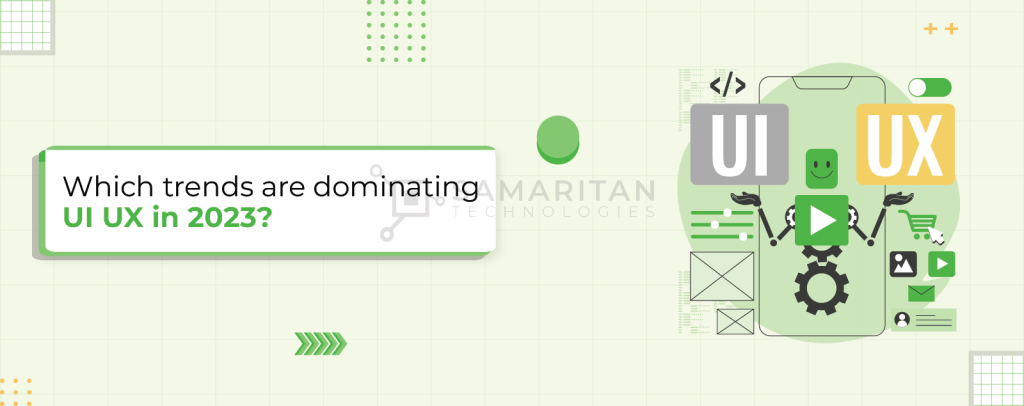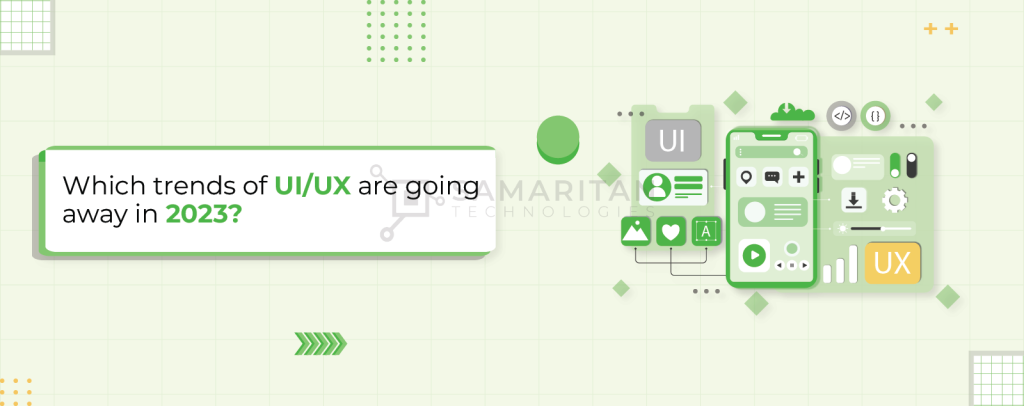What Are the Latest Trends in UI/UX for 2023

User Interface (UI) and User Experience (UX) design have evolved significantly over the years, and 2023 is no exception These design elements have become integral to the success of websites, apps, and digital products, as they directly impact how users interact and engage with technology. In this article, we embark on a journey to explore the latest trends in UI/UX for 2023, delving into what’s making waves in the design community.
In this article, we’ll explore the latest trends in UI/UX design for 2023, shedding light on what’s currently shaping the digital landscape.

What is UI/UX Design?
Before delving into the trends, let’s clarify what UI and UX design entail:
UI Design (User Interface): UI design focuses on the visual elements of a product. It includes the layout, colour schemes, typography, and interactive components, all aimed at making the interface visually appealing and user-friendly.
UX Design (User Experience): UX design is about enhancing the overall user journey and satisfaction. It involves understanding users’ needs, optimizing usability, and ensuring a seamless and enjoyable experience.
Which Trends Are Dominating UI/UX in 2023?
1. Dark Mode Everywhere:

Dark mode, characterized by a dark colour scheme with white or light text, has become a prominent UI/UX trend. It reduces eye strain, enhances readability in low-light conditions, and can even prolong battery life on devices with OLED screens. Many apps and websites now offer a dark mode option, making it a user-preferred feature.
2. Minimalistic and Clean Designs:
Simplicity is at the forefront of UI/UX design trends in 2023. Minimalistic designs with clean lines, ample white space, and straightforward navigation have gained widespread popularity. This design approach not only looks modern but also improves user comprehension and ease of use.
3. Micro interactions:
Microinteractions are subtle animations or responses triggered by user actions. They add a layer of engagement and feedback to user interactions. For instance, a heart animation when liking a post on social media or a subtle bounce effect when a button is pressed. These microinteractions enhance the user experience by making it more interactive and enjoyable.
4. Voice User Interface (VUI):
Voice-controlled interfaces are on the rise, driven by advancements in natural language processing and speech recognition technology. VUI allows users to interact with devices and applications using voice commands, reducing the need for manual input. It’s not limited to smart speakers but is finding its way into smartphones, cars, and even household appliances.
5. Augmented Reality (AR) and Virtual Reality (VR):
AR and VR technologies are no longer confined to gaming and entertainment. They are expanding into various industries, including e-commerce, education, healthcare, and architecture. These technologies provide immersive and interactive experiences that engage users in new and exciting ways.
How to Implement These Trends Effectively
Now that we’ve identified the trends, let’s discuss how to implement them effectively:
User-Centered Design: Always prioritize the user’s needs and preferences in your design choices. Conduct user research, gather feedback, and iterate on your designs accordingly.
Consistency: Maintain a consistent design language across your product. This includes using the same icons, fonts, and colours throughout to create a cohesive user experience.
Accessibility: Ensure your design is accessible to all users, including those with disabilities. This includes using accessible colour schemes, providing alternative text for images, and optimizing for screen readers.
Testing and Iteration: Continuously test your designs with real users and gather feedback. Use this feedback to make improvements and refine your UI/UX.

Which trends of UI/UX are going away in 2023
While it’s challenging to predict with certainty which UI/UX trends will fade away in 2023, we can make some educated guesses based on the current trajectory of design evolution. Here are a few trends that might see less prominence:
Skeuomorphism:
This design trend, which involves making items represented resemble their real-world counterparts, has been slowly phased out over the years. The industry is moving towards more minimalist and flat design.
Complex Graphical User Interfaces (GUIs):
With the rise of voice user interfaces (VUI) and touchless interactions, traditional GUIs might become less prevalent.
Static Images:
As technology advances, static images are being replaced by animations and 3D elements to create more engaging and interactive experiences.
Generic Typography:
Bold and unique typography is becoming a trend, moving away from generic and commonly used fonts.
Non-Responsive Design:
With the variety of devices available today, non-responsive designs that do not adapt to different screen sizes are becoming obsolete.
Non-Personalized Experience:
Users now expect personalized experiences tailored to their preferences and behaviour. Designs that do not take personalization into account may be less favoured.
Button-Heavy Designs:
The industry is moving towards buttonless UIs and gesture-driven navigation.
Dark Mode Only:
While dark mode became very popular, there’s a resurgence in light mode UI in 2023.
Flat design:
Flat design is a minimalist design style that uses simple shapes and colours. It became popular in the early 2010s, but it is now starting to give way to more complex and nuanced designs.



